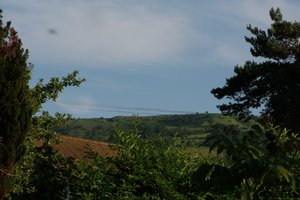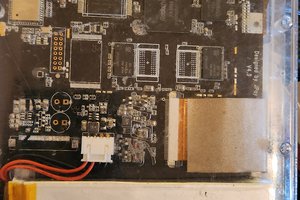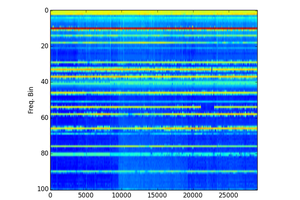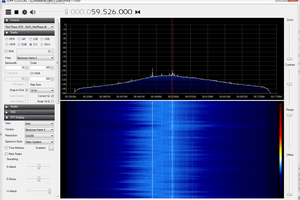DIY SW , MW , Retro look Radio with ESP32/Si5351
This radio receiver is capable of receiving all MW and SW bandwidth, and can also operate as an SDR receiver, so with the help of PC and app
This radio receiver is capable of receiving all MW and SW bandwidth, and can also operate as an SDR receiver, so with the help of PC and app
To make the experience fit your profile, pick a username and tell us what interests you.
We found and based on your interests.
customizableknob_ORQXPqUhyZ.scadScad files for 3D printingscad - 6.35 kB - 05/07/2020 at 13:50 |
|
|
speaker_grill_bXMsM0QYGd.scadScad files for 3D printingscad - 1.56 kB - 05/07/2020 at 13:50 |
|
|
circuit.PNGSchematic for ESP32 rotary dialPortable Network Graphics (PNG) - 35.42 kB - 05/07/2020 at 13:48 |
|
|
VFOsys_astep.7zESP32 rotary dial CODE7-Zip - 18.21 kB - 05/07/2020 at 13:47 |
|
|
This radio receiver is capable of receiving all MW and SW bandwidth, and can also operate as an SDR receiver, so with the help of PC and appropriate software we can decode many different types of signals.
It consists of several parts:
At the input we start with a potentiometer of 1 k ohm, it is the RF attenuator. The next circuit is the preselector, switchable to the MW and SW ranges. Tuning of the preselector is done with a potentiometer. The tuning voltage is stabilized by 4 LEDs but of course you can also use a 6.8 V or 8.2 V zener diode. The two transistor RF amplifier increases the sensitivity and prevents also that Local Oscillator signals from the mixer are leaking to the antenna input. This would cause a lot of hum. The mixer is a well known NE612 (or NE602, SA602, SA612).
And now a little more detail about the local oscillator. This VFO was actually the reason why I decided to build this receiver. It is based on Genius idea of T.Uebo / JF3HZB to create virtual Analog rotating dial on Colour TFT screen. For the preparation of this section is used an ESP32 microcontroller, Si5351A I2C Signal Generator module board and 1.8 inch 128x160 TFT LCD with ST7735 chip. A rotary encoder is used to change the frequency. You can download the code below or directly from autr page : https://tj-lab.org/2019/02/17/vfo5/. The code can be easily modified so that we can change scale and background colors, scale shape, the direction of rotation and rotating speed. Also can be changed Offset and Carrier frequencies as well as minimum frequeny changing step and other parameters. On the picture below you can see some visual modifications to the dial scale.
The code modifications I made in this case are:
The next step is the IF amplifier and decoder. I tried several types, with integrated circuits TCA440, TDA1072, but I was challenged to do this part in the good old way with IF transformers. You really need a lot of patience to set it up, but the result is great.
Now the signal is carried to a pre-amplifier based on the 741 IC and finally an class D amplifier board with PAM8403 from Aliexpress.
And lastly to emphasize that the sensitivity and selectivity of this receiver are excellent, given that I am in a densely populated part of town and the antenna used (The PA0RDT Mini Whip) is only 3 m above the ground.
Create an account to leave a comment. Already have an account? Log In.
Really nice work, the curved tuning dial is an excellent touch.
Love the look of the dial! Any thoughts about adding a waterfall display option to it?
Become a member to follow this project and never miss any updates

 fixitdaz
fixitdaz
 badwolfdemon
badwolfdemon
 Pete Marchetto
Pete Marchetto
 Antti Lukats
Antti Lukats
Nice construction. I notice the antenna coil bars are inside the box. Do they pick up much noise from the display or ESP32 board? What methods were used to keep digital noise out of the RF stages?